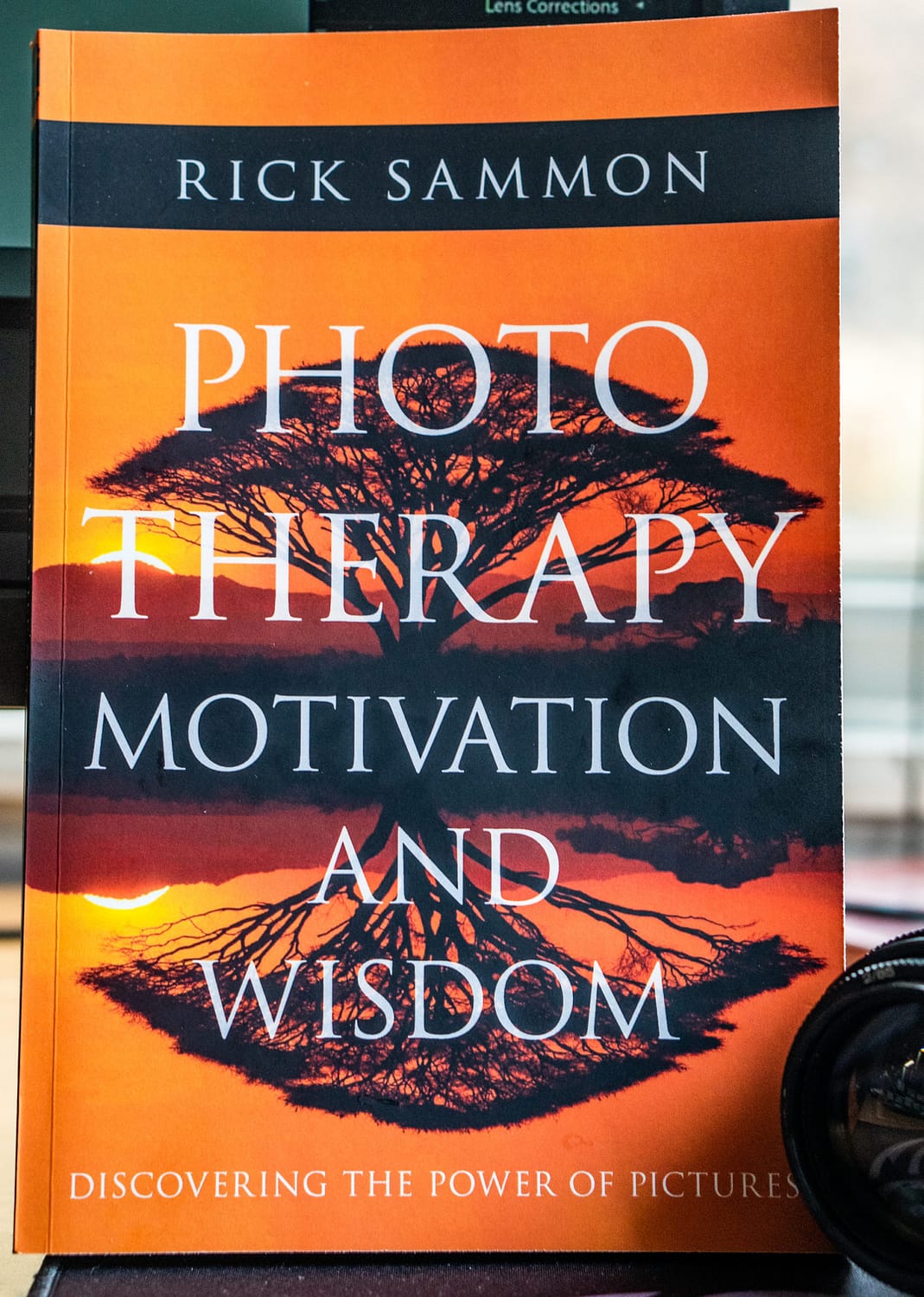Bookshop photography sections are turgid with tomes about tweaking exposures, color calibration, and the zone system and many of the spines carry the name of Rick Sammon, award-winning travel photographer. So perhaps it should be no surprise that Sammon has written a book about how to use your brain – the key photo “accessory”. “Photo Therapy: Motivation and Wisdom” by Rick Sammon, approaches photography from a philosophical, at times healing, point of view. It is Sammon’s belief that photography is good for you.
“My camera is a time machine, capturing precious slices of time that can be relived again and again in my mind and with others.”
The camera is more than an expensive tool to Rick Sammon. He describes his camera as a time machine, a license (to walk up to strangers), and as a magic carpet that transports him to faraway places. In Sammon’s case, he has traveled to around 100 countries with his camera and wonders if he travels to take pictures or takes pictures to travel.
One-shot, One Life
Sammon proposes a “one shot, one life”, almost Zen, approach to taking pictures. He urges us to imagine that we only have one shot left to take. It forces the photographer to pay more attention to composition, exposure, focus, etc., before taking that shot. With this approach, we end up with better pictures and a lot fewer to go through when we get home.
Sammon’s style of photography can be good aerobic exercise as well. Anyone who has clambered up a giant sand dune in Namibia to take a picture from the top can attest to the fact that photography can be a strenuous sport. Carrying 30 pounds of camera gear to remote locations can qualify as a cardio workout. Sammon goes beyond the health benefits of physical activity however to engage us on the psychological, or therapeutic, benefits of photography.
Connecting to the Inner Artist
Photography, done right, can be the best mindfulness practice one can get while outdoors – or even while post-processing photos. Photographers, good ones that is, stop to look at a scene and drink in the mood and the nature of what lies before them. This forces the photographer to be in the present, not distracted by the past or the future. Mindfulness is good for the brain and Sammon urges us to not just “see” a scene but to really “look” at it. As he points out, it is similar to the difference between hearing a song and really listening to it.
Mindfulness can also occur when the photographer is post-processing photos on the computer at home. Sammon describes the pleasure of getting “in the flow” of image creation when the technology and distractions fade into the background noise when we focus on creating a mood with the image. The more competent we become with the technology the less we pay attention to the technology. Sammon advises going back over old images when we reach this level. We can see them in a new light.
Connecting to Others
The camera can also help those of us who are natural introverts connect with strangers. As Sammon points out, the camera gives us a license to do things we would not ordinarily do, such as walk up to a person and ask to take their picture. It also gives strangers an excuse to engage with us. And this does not even take into account the times when strangers yell at us to get off their property.
“Photo Therapy” is aimed at the professional photographer and serious amateur crowd but is not too technical for the traveler that just wants to take better photos on trips. That said, the author does touch upon both his interesting experiences as a professional travel photographer and the business side of his artistry. In the chapter on “The Harder You Work, the Luckier You Become”, the author gives examples of how saying “yes” to opportunities that he thought he did not have time for or were too challenging, ultimately paid off with unforeseen benefits that changed his life.
The “40 Sammonisms” is a collection of the author’s life and picture-taking tips gleaned from decades of experience. They range from tips on composition to business advice. These alone are worth the price of the self-published book. Travel photographers and “picture-takers” alike will get something out of these pithy paragraphs. If you just want to learn how to take better photos on your travels these tips are the key.
Photographers who post-process their photos (e.g. tweak them in Lightroom, etc.) will find some gems among Sammon’s tips. I had always been confused about the difference between the “saturation” and “vibrance” sliders in Lightroom so the “Stay Away from Oversaturation” Sammonism was an epiphany for me.
Understandably, the author promotes his group photo tours and classes in the book – and those of his friends, but not to the point of annoyance. Who can fault a person for practicing what they teach? For paying it forward? Sammon talks a lot about the therapeutic benefits of photographing in groups. Having led photography group tours and classes for decades, Sammon’s observations about group therapy using cameras are a rare insight to a person like me that has never participated in a group photography tour or class.
In his final chapter Sammon challenges us to accept a series of missions, or assignments, to practice photo therapy. The first mission, should you accept it; is photographing your toilet. I say, go for it.
Kevin Chambers



